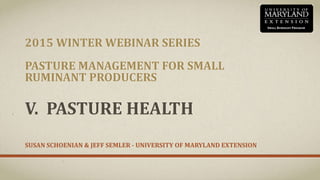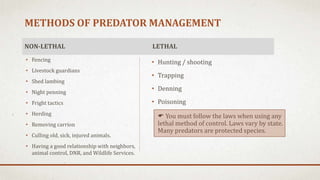The document discusses various health problems affecting small ruminants, specifically focusing on grazing-related issues such as bloat, fescue toxicosis, and gastrointestinal parasites. It outlines symptoms, treatment methods, and preventive measures for these conditions, emphasizing the significance of pasture management and the risks posed by toxic plants and predation. Additionally, strategies for integrated parasite management and predator control are highlighted to support the health and productivity of small ruminant producers.























